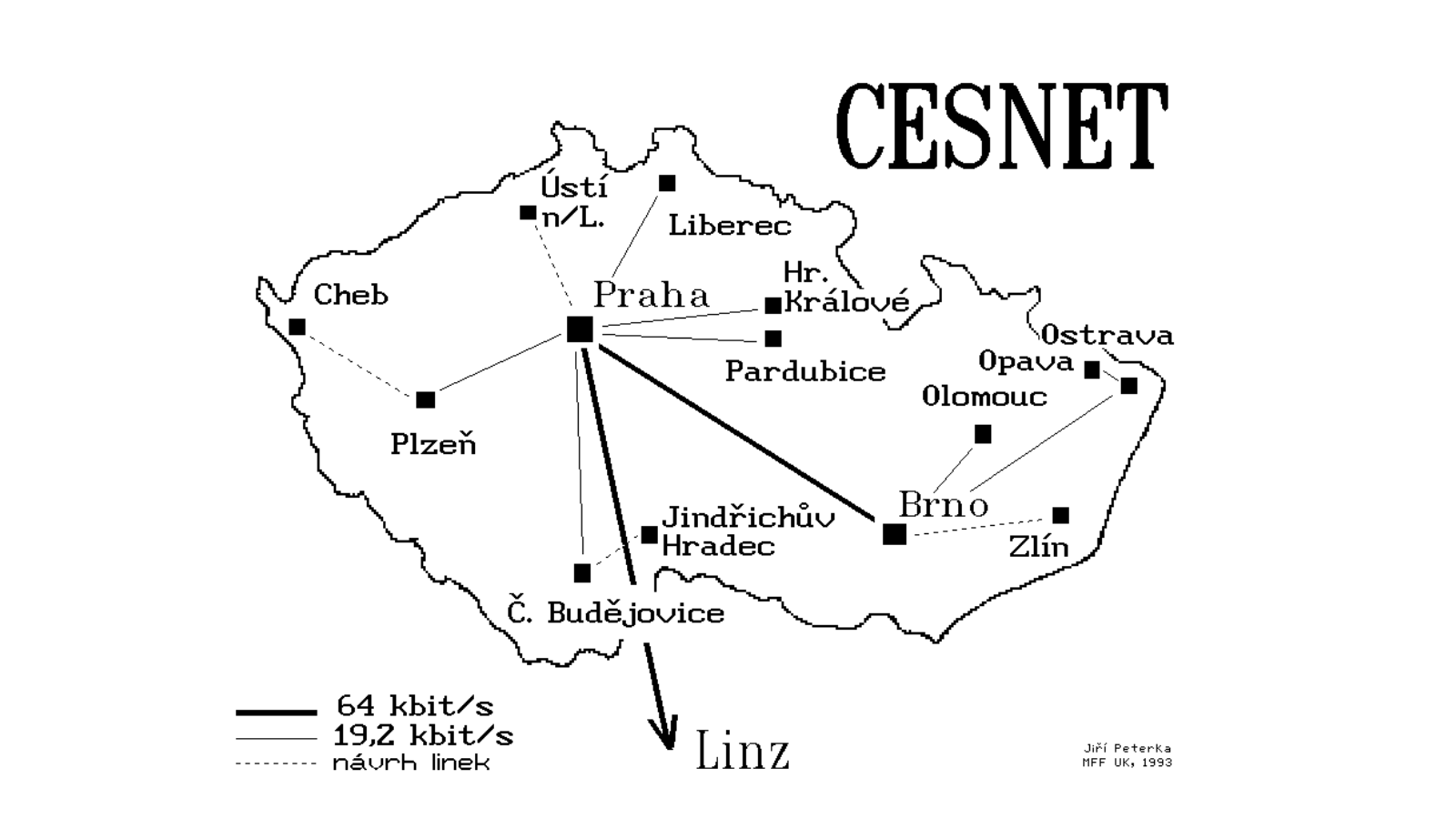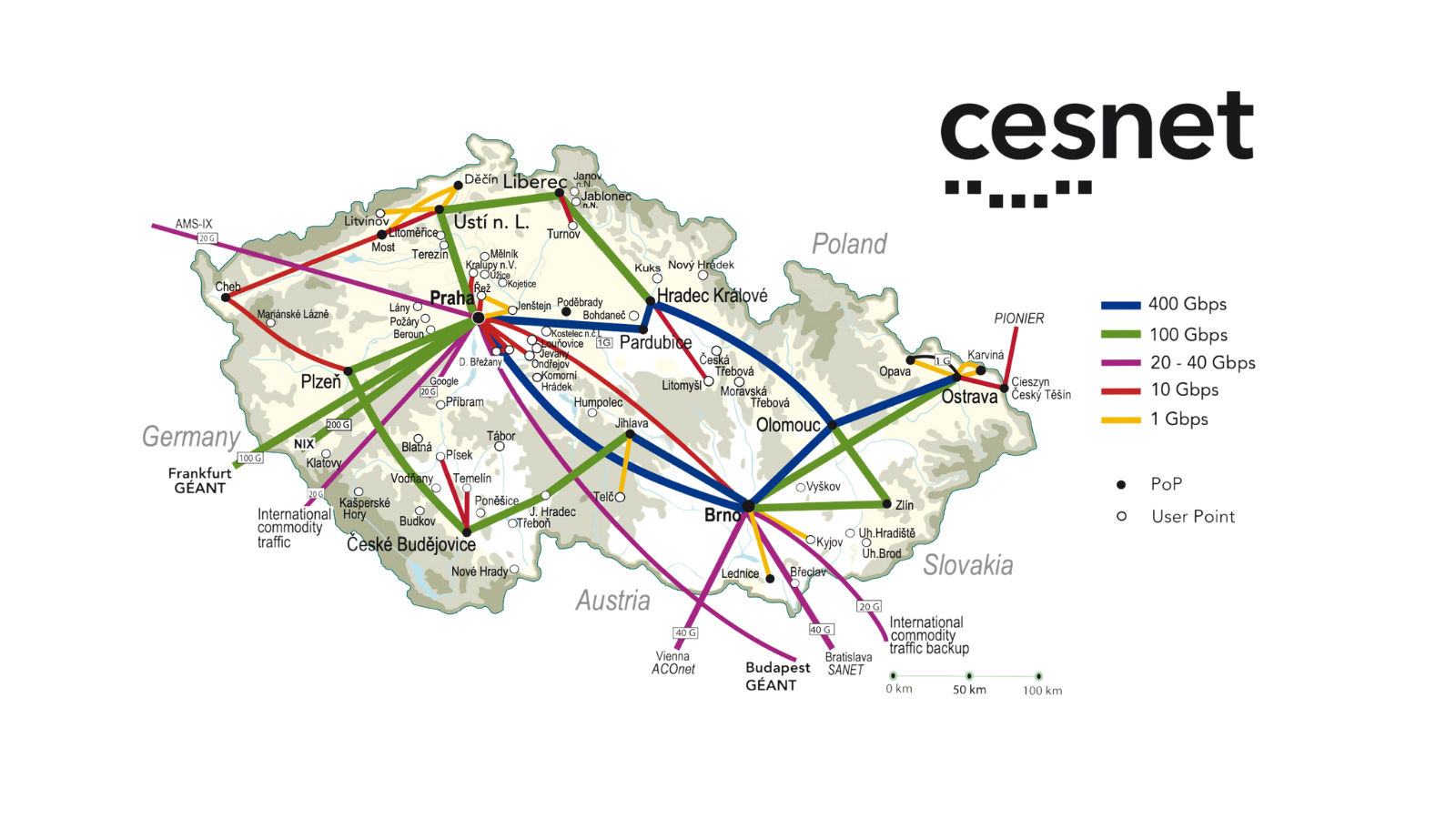The CESNET network, the foundation of the domestic Internet, was launched 30 years ago. Its speed has since increased 10 million times
Exactly 30 years ago, on 15 June 1993, the Czech University in Prague launched the CESNET academic computer network. At that time it connected ten Czech and Moravian university towns at a speed of 19.2 kbit/s, the main Prague-Brno route boasted 64 kbit/s. It was a major milestone in the introduction of the Internet to the Czech Republic.
“CESNET was initially the only way to connect in our country. Therefore, the originally exclusively academic infrastructure began to offer its free capacity for commercial purposes, and the Internet was thus also available to those interested in the private sphere,” says Jan Gruntorád, one of the main initiators of the creation of the academic network and long-time director of the CESNET association, which was founded in 1996 and took over the operation of the eponymous network from CTU.
Today, the CESNET network has a transmission capacity of hundreds of gigabits per second, 10 million times faster than 30 years ago. With its parameters and services, advanced methods of monitoring, detection and cyber protection, it is one of the most advanced scientific research networks in Europe and is a key part of the unique e-INFRA CZ national e-infrastructure for research, science and education.
The CESNET network has played an important role in the Czech and European Internet throughout its existence. Soon after its creation, CESNET joined the preparations for the TEN-34 project, which aimed to build an academic backbone infrastructure in Europe equivalent to similar projects in the USA. This network now operates under the name GÉANT and provides top speed connectivity and related services to European scientists and researchers.
In 2001, the CESNET2 era begins, characterised by the transition to gigabit speeds that were not widely available in the original concept based on providing capacity as a service. CESNET has therefore become one of the first infrastructures in the world to promote Customer Empowered Fibre Networks (CEF), optical networks built over so-called dark fibre, whose transmission technology is provided by the customer. With the introduction of DWDM technology, which allows dozens of independent signals to be transmitted over a single fibre, the capabilities of backbone infrastructure shifted again in 2004. Even today, after several upgrades, DWDM technology remains the backbone of the network.
The growing volume of data traffic and the advent of applications that require extreme data streams in the following years has triggered the need to scale up the network core to ever higher data rates. This year the association completed a major upgrade that will enable data transmission in the backbone network at speeds of up to 400 Gbit/s per channel, with the possibility of future increases to terabit speeds.
The deployment of modern network elements also leads to a significant reduction in the requirements for housing technology and a reduction in power consumption. The backbone of the network is being built over 2,240 kilometres of fibre optic paths, including advanced precision time and frequency transmissions, and is ready for quantum key distribution (QKD) transmissions on a shared medium. As the upgrade brought a major generational technological change, the association also updated the designation of the backbone network to CESNET3.
“Our users can now work and exchange data more efficiently. Their connection to CESNET data storage facilities, the MetaCentrum infrastructure for demanding calculations, the IT4Innovations supercomputer centre, as well as to foreign partners connected via the pan-European GEÁNT network will also be accelerated,” says Jakub Papírník, the current director of the CESNET association.

CESNET network topology in mid-1993

CESNET network topology in 2023

